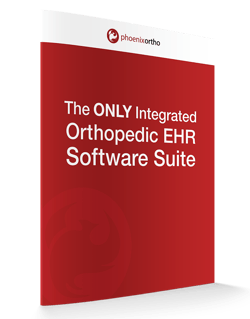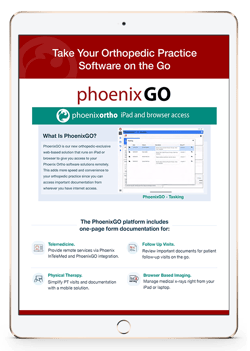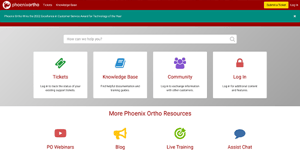Telemedicine and telehealth are terms that often get used interchangeably. However, while both terms are similar and involve the use of telecommunications technology in medical or healthcare practices, there is a key difference.
Telemedicine vs Telehealth: Definitions to Know
Telemedicine Definition:
As noted by AAFP, telemedicine is “the practice of medicine using technology to deliver care at a distance.” In other words, it is delivering remote healthcare through the use of technology.
Telehealth Definition:
Also as noted by AAFP, telehealth “refers broadly to electronic and telecommunications technologies and services used to provide care and services at-a-distance.” To put it another way, telehealth is the delivery of general health services remotely.
What’s the Difference between Telehealth Software vs Telemedicine Software?
If both terms refer to the delivery of remote services using technology, what’s the difference? The major difference between telemedicine and telehealth software is a matter of scope. As stated by HealthIT.gov, “While telemedicine refers specifically to remote clinical services, telehealth can refer to remote non-clinical services, such as provider training, administrative meetings, and continuing medical education, in addition to clinical services.”
So, while all telemedicine is telehealth, not all telehealth solutions are telemedicine. There are services that can be categorized as telehealth that are not specifically clinical services.
Some examples of services that would specifically be considered telemedicine include:
- Remote Patient Monitoring. By using tests conducted by the patient and medical images taken by them, physicians can track the progression of a known condition remotely.
- Telerehabilitation. Remotely communicating with patients to assess their rehabilitation needs and provide therapy for them. Often done via videoconferencing solutions to allow orthopedists to walk patients through different recovery exercises.
- Remote Pharmacy Services/Prescription Management. When doctors provide pharmaceutical advice or services to patients remotely. This can include the remote writing or approval of prescription medications.
Virtually any remote patient interaction that isn’t part of a clinical service would fall under the umbrella term telehealth instead of telemedicine. To put it another way, AHIMA, the HIM Body of Knowledge website, notes that telehealth is used to “provide access to health assessment, diagnosis, intervention, consultation, supervision and information across distance. Telehealth includes such technologies as telephones, facsimile machines, electronic mails systems, and remote patient monitoring devices.”
This definition of telehealth emphasizes giving patients access to their own health information via a variety of communication channels.
Telemedicine and Telehealth Software Benefits for Orthopedic Practices
So, why should your orthopedic practice use telehealth or telemedicine software? The short answer is that it can help you save time, increase patient satisfaction, and improve your clinic’s cash flow. Here’s an explanation:
1. Saving Time on Patient Interactions
With some telehealth software, orthopedic physicians can review a short report and a few self-taken images that describe a patient’s medical issue instead of having to personally oversee a full physical examination. This helps to save time for some of the more easily diagnosed conditions that orthopedic clinics see on a daily basis.
However, if the report is unclear or verification needs to be made, the physician can still refer the patient to make an in-person visit to see a specialist.
2. Increasing Patient Satisfaction
One of the biggest advantages of telemedicine and telehealth solutions is that they can make seeking orthopedic care much more convenient for patients. Instead of having to drive out to the clinic, fill out several pages of information, and wait for a doctor or assistant to be free to conduct a preliminary evaluation, a patient can simply open up an app, take a few relevant pictures, and write a short description of their condition.
This saves a lot of time for the patient and removes some of the stress of “going” to see the doctor, which contributes to increased patient satisfaction.
3. Growing Your Clinic’s Customer Base
By removing the need to physically travel to the practice location, orthopedic clinics can drastically improve their service area. In many cases, when a patient needs medical care or advice of some kind, they’ll travel to the nearest available doctor (even if they’re the wrong kind of specialist).
However, more and more people are seeking medical care online. In fact, Google reports that roughly “5% of all Google searches are health-related.” More importantly, as noted by Invoca, consumers researching physical therapists are among “the most likely to use search engines” at a rate of 84%.
Being able to provide remote services to people who search online for orthopedic care or occupational/physical therapy can be an enormous competitive advantage that helps secure business from patients that would never have considered your clinic otherwise.
4. Improving Cash Flow
Aside from increasing revenue by seeing more patients from a wider geographic area, clinics can use telehealth and telemedicine to improve cash flow by adding a new revenue stream. Additionally, with the right telemedicine software, orthopedists can eliminate data entry errors, improve their patient visit notes, and streamline their evaluation and management (E & M) coding to reduce billing code audits and rejections for remote visits.
This helps to streamline the payment collection process and improve cash flow for the practice.
What’s the Best Telehealth/Telemedicine Solution for Your Clinic?
Wondering what the best remote health service solution for your orthopedic practice would be? Some things to consider include:
- The Range of Services the Software Can Cover. While you want to make sure that all of your bases are covered with remote health services, you also don’t want to deal with feature bloat that can make sifting through the software too time-consuming and tedious. So, a specialty-specific software suite might be your best option.
- Ease of Communication with Patients. How simple does the software make it to communicate important information with patients? The more convenient and simple the process, the better.
- Payment Collection Support Features. It’s important that you’re able to collect money for the services you render. So, having telehealth software that streamlines the payment collection process is vital.
- Patient Data Collection Features. How does the software collect and store data for your patient chart? Can it interact with your EHR software to share vital patient information easily, or are you having to manually recreate information between the telehealth solution and your EHR?
These are just a few of the things to look out for in telehealth software. If you need help simplifying your orthopedic practice workflows while integrating telehealth solutions, reach out to Phoenix Ortho today!
Schedule a 1:1
Get in touch with Phoenix Ortho to learn more about how you can save time, money, and mouse clicks with an orthopedic-specific EHR.






















